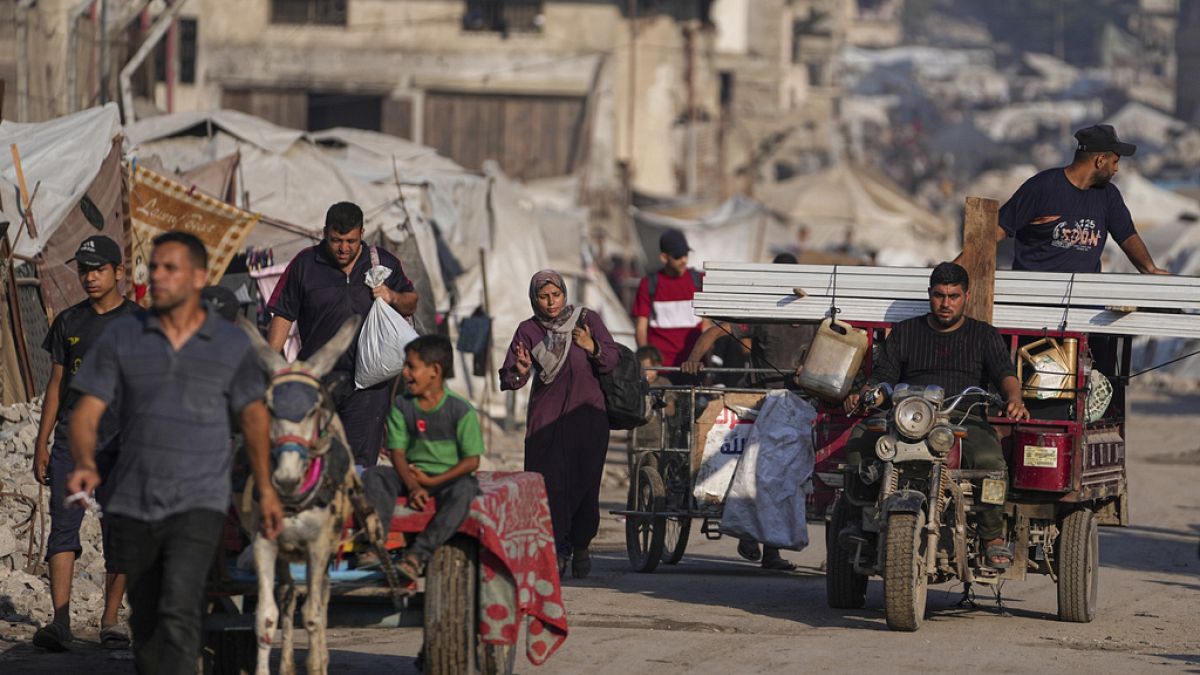

In recent developments surrounding the Middle East, several key players have voiced their perspectives, highlighting both the challenges and potential opportunities that arise from the ongoing tensions in the region. Amidst growing calls for de-escalation, the international community continues to engage in dialogues aimed at fostering stability and peace.
On Sunday, US President Donald Trump underscored the importance of a ceasefire in the Gaza region, urging for immediate diplomatic agreements to facilitate the release of hostages. Emphasizing communication through social media, President Trump called for a resolution that resonates with peace, stating, “Make the deal in Gaza. Get the hostages back!!!” This plea reflects the broader international desire to see a reduction in hostilities and a shift towards constructive negotiations.
Simultaneously, the Israeli government has announced a significant military strategy in northern Gaza, involving mass evacuations as part of a plan to expand its operations. This development underscores the complexities of on-ground realities that continue to shape regional dynamics. Israeli Prime Minister Benjamin Netanyahu has addressed these tensions by highlighting “broad regional possibilities” for diplomatic engagement. His remarks suggest an openness to unexpected avenues of dialogue, calling attention to the potential for regional shifts that could emerge from current circumstances.
Complementing these efforts, US Ambassador to the Republic of Türkiye, Thomas Barrack, mentioned that the current conflict between Iran and Israel has, paradoxically, opened new diplomatic paths in the Middle East. He pointed to the significant behind-the-scenes engagements between Syria and Israel, noting the potential for discussion on longstanding issues. This development serves as a reminder of how conflict can sometimes drive parties towards renewed conversations, seeking resolutions that might previously have seemed unattainable.
The broader international context also features actions from European nations, including France, Germany, and the United Kingdom. In a joint statement, these countries reiterated their call to Iran to continue its cooperation with the International Atomic Energy Agency (IAEA). Their message comes amid concerns about Iran’s nuclear activities and rising military tensions in the region. The European countries also strongly condemned any threats against the U.N. nuclear watchdog’s leadership, following calls from an Iranian publication for the execution of the agency’s head. These actions collectively underscore the sensitivity and interconnectivity of diplomatic relations and security concerns in the Middle East.
Overall, the current state of affairs in the region highlights both the intricacies and the potential for transformative diplomacy. While challenges persist, the willingness for dialogue and negotiation remains a critical thread weaving through the fabric of these international efforts. With nations like Syria and Israel engaging in conversations and influential figures advocating for peaceful resolutions, the potential for a shift towards stability appears within reach.
The situation in Gaza and the broader Middle East calls for a nuanced understanding of regional interests, the stakes of international diplomacy, and the collective will to transcend long-standing disputes. The interplay of military strategies and diplomatic engagements paints a complex landscape, one that requires mindful navigation and committed dialogue. As global leaders continue to push for ceasefire agreements and pathways to peace, the hope remains that these efforts may soon translate into tangible progress, offering a vision for a more harmonious future in the Middle East.
Thus, as global attention remains fixed on this critical region, the collective aim is towards fostering an environment where peace and cooperation can surpass the shadows of conflict. Diplomacy stands as a pillar of strength in these endeavors, advocating for dialogue and understanding that recognizes the shared aspirations of all involved parties. The journey towards lasting peace is ongoing, and current dialogues lay the groundwork for a future filled with promise and potential.
Source: {link}
